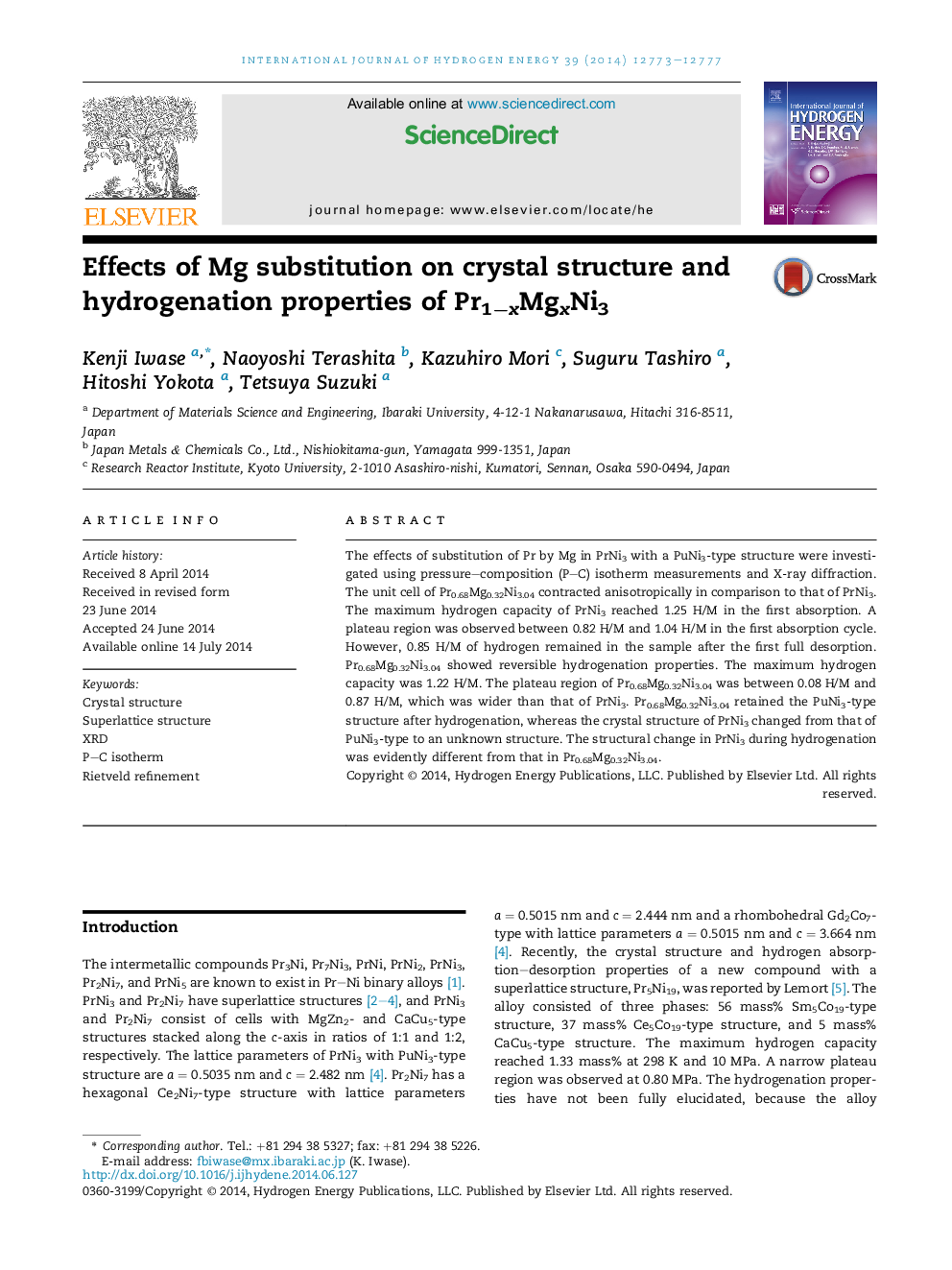| Article ID | Journal | Published Year | Pages | File Type |
|---|---|---|---|---|
| 7718539 | International Journal of Hydrogen Energy | 2014 | 5 Pages |
Abstract
The effects of substitution of Pr by Mg in PrNi3 with a PuNi3-type structure were investigated using pressure-composition (P-C) isotherm measurements and X-ray diffraction. The unit cell of Pr0.68Mg0.32Ni3.04 contracted anisotropically in comparison to that of PrNi3. The maximum hydrogen capacity of PrNi3 reached 1.25Â H/M in the first absorption. A plateau region was observed between 0.82Â H/M and 1.04Â H/M in the first absorption cycle. However, 0.85Â H/M of hydrogen remained in the sample after the first full desorption. Pr0.68Mg0.32Ni3.04 showed reversible hydrogenation properties. The maximum hydrogen capacity was 1.22Â H/M. The plateau region of Pr0.68Mg0.32Ni3.04 was between 0.08Â H/M and 0.87Â H/M, which was wider than that of PrNi3. Pr0.68Mg0.32Ni3.04 retained the PuNi3-type structure after hydrogenation, whereas the crystal structure of PrNi3 changed from that of PuNi3-type to an unknown structure. The structural change in PrNi3 during hydrogenation was evidently different from that in Pr0.68Mg0.32Ni3.04.
Related Topics
Physical Sciences and Engineering
Chemistry
Electrochemistry
Authors
Kenji Iwase, Naoyoshi Terashita, Kazuhiro Mori, Suguru Tashiro, Hitoshi Yokota, Tetsuya Suzuki,
